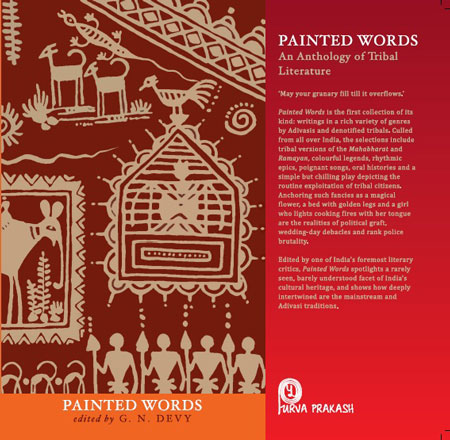“Primitive, geographically isolated, shy and socially, educationally & economically backwardness these are the traits that distinguish Scheduled Tribes of our country from other communities. Tribal communities live in about 15% of the country’s areas in various ecological and geo-climatic conditions ranging from plains to forests, hills and inaccessible areas.” – National Commission for Scheduled Tribes, Government of India (Ministry of Tribal Affairs) http://www.ncst.nic.in | To read more, click here >>
There are over 500 tribes (with many overlapping communities in more than one State) as notified under article 342 of the Constitution of India, spread over different States and Union Territories of the country, the largest number of tribal communities being in the State of Orissa. The main concentration of tribal population is in central India and in the North-eastern States. However, they have their presence in all States and Union Territories except Hayrana, Punjab, Delhi, Pondicherry and Chandigarh. The predominantly tribal populated States of the country (tribal population more than 50% of the total population) are:
Arunachal Pradesh, Meghalaya, Mizoram, Nagaland, Union Territories of Dadra & Nagar Haveli and Lakshadweep. States with sizeable tribal population and having areas of large tribal concentration are A.P. Assam, Chhattisgarh, Gujarat, Himachal Pradesh, Madhya Pradesh, Maharashtra, Orissa and Rajasthan.
Promotion of all round development of tribals inhabiting the length and breath of our country has received priority attention of the government. There are numerous government policies for ensuring the welfare and well being of tribals. The Govts. at State as well as Central levels have made sustained efforts to provide opportunity to these communities for their economic development by eradicating poverty and health problems and developing communication for removal of isolation of their habitats. The Constitution of India seeks to secure for all its citizens, among other things, social and economic justice, equality of status and opportunity and assures the dignity of the individual. The Constitution further provides social, economic and political guarantees to the disadvantaged sections of people. Some provisions are specific to both Scheduled Castes and Scheduled Tribes and some are specific to only Scheduled Tribes. […]
Source: Central Government
Address: http://www.ncst.nic.in/sites/default/files/documents/central_government/File415.pdf
Date Visited: Thu Apr 06 2017 21:07:56 GMT+0200 (CEST)
Socio-economic Development Of Scheduled Tribes
For the Socio-economic and overall development of the Tribal people, special provisions and safeguards have been provided in the Constitution of India and some initiative have also been taken by the Government of India, including Tribal Sub Plan (TSP) strategy. The Tribal Sub Plan (TSP) strategy was aimed for the rapid socio-economic development of tribal people. The funds provided under the Tribal Sub Plan of the State have to be at least equal in proportion to the ST population of each State or UTs. Similarly Central Ministries/Departments are also required to earmark funds out of their budget for the Tribal Sub-Plan. As per guidelines issued by the Planning Commission, the Tribal Sub Plan funds are to be non-divertible and non-lapsable. The National Commission for Scheduled Tribes is vested with the duty to participate and advise in the planning process of socio-economic development of STs, and to evaluate the progress of their development under the Union and any State.
Source: Socio-economic Development Of Scheduled Tribes | National Commission for Scheduled Tribes
Address: http://www.ncst.nic.in/content/socio-economic-development
Date Visited: Thu Apr 06 2017 21:05:11 GMT+0200 (CEST)
[Bold typeface added above for emphasis]
Tips for using interactive maps
Toggle to normal view (from reader view) should the interactive map not be displayed by your tablet, smartphone or pc browser
For details and hyperlinks click on the rectangular button (left on the map’s header)
Scroll and click on one of the markers for information of special interest
Explore India’s tribal cultural heritage with the help of another interactive map >>
See also
Adverse inclusion | Casteism | Rural poverty
Demographic Status of Scheduled Tribe Population of India (Census figures 2011)
Fact checking | Figures, census and other statistics
Human Rights Commission (posts) | www.nhrc.nic.in (Government of India)
Search tips | Names of tribal communities, regions and states of India
“What is the Forest Rights Act about?” – Campaign for Survival and Dignity
“Who are Scheduled Tribes?” – Government of India (National Commission for Scheduled Tribes, NCST)

Tribal Literature by G.N. Devy >>
Free eBooks & Magazine: Adivasi literature and languages >>
“India, a union of states, is a Sovereign, Secular, Democratic Republic with a Parliamentary system of Government. The President is the constitutional head of Executive of the Union. In the states, the Governor, as the representative of the President, is the head of Executive. The system of government in states closely resembles that of the Union. There are 28 states and 8 Union territories in the country. Union Territories are administered by the President through an Administrator appointed by him/her. From the largest to the smallest, each State/UT of India has a unique demography, history and culture, dress, festivals, language etc. This section introduces you to the various States/UTs in the Country and urges you to explore their magnificent uniqueness…” – KnowIndia (Government), States and Union Territories (Visited: 2 September 2023)
Learn more about India’s 28 States and 8 Union Territories – From Andhra Pradesh to West Bengal | Nutrition >>
Find publications by reputed authors (add “open access” for freely downloadable content)
Learn more
Books on tribal culture and related resources
Constitution and Supreme Court
eJournals, eBooks & reports | eLearning | Background guide for education
Forest Rights Act (FRA) | Illegal mining
Information provided by Indian government agencies and other organizations (FAQ)
Languages and linguistic heritage
Multilingual education is a pillar of intergenerational learning – Unesco
Particularly vulnerable tribal group
Scheduled Tribes under the Constitution of India: Literacy rates and characteristics
Unesco | Unicef | Unicef India | United Nations
United Nations International Days and Weeks
United Nations Permanent Forum on Indigenous Issues
Video | “Nations don’t make us human – languages make us human”: Ganesh Devy